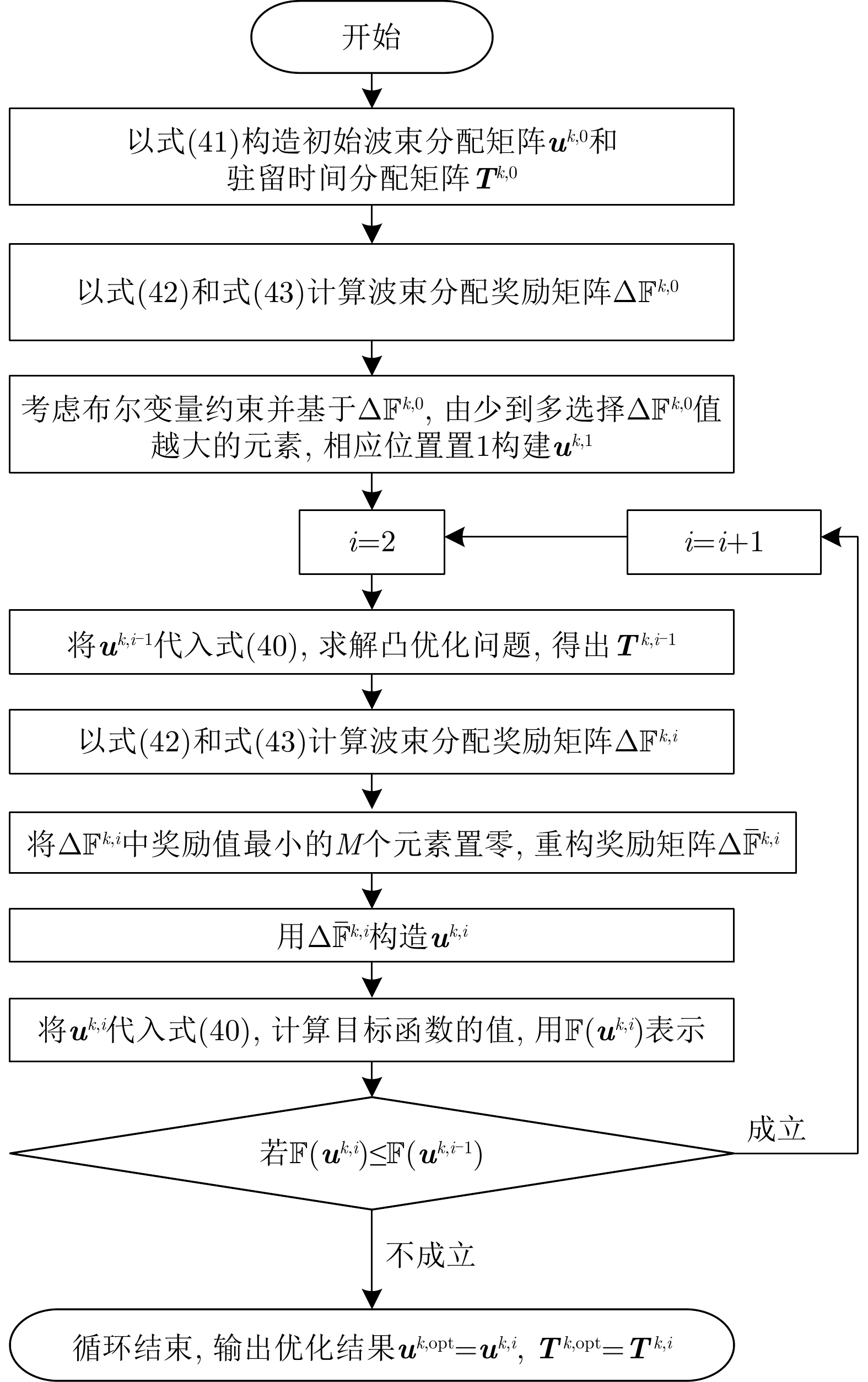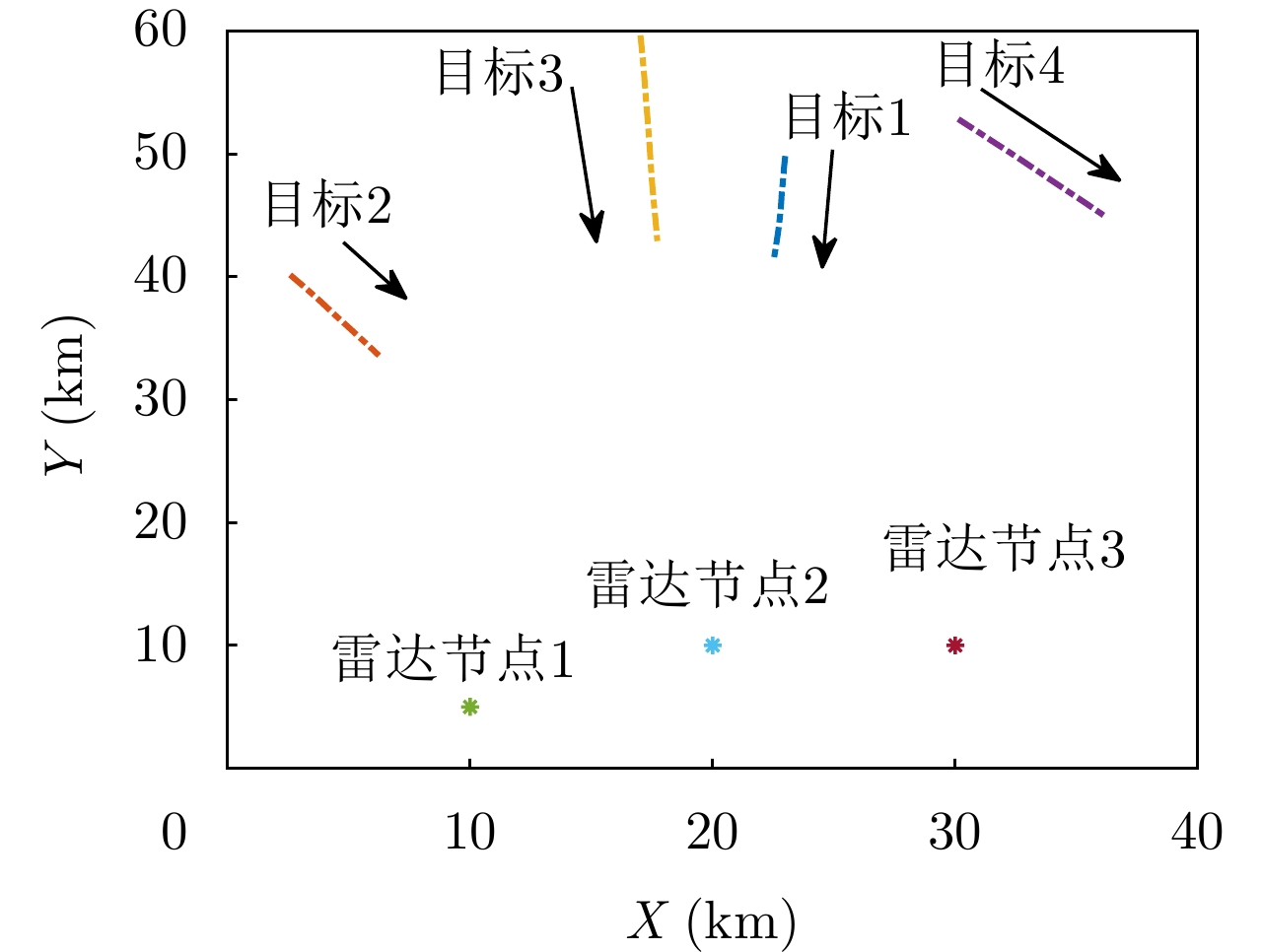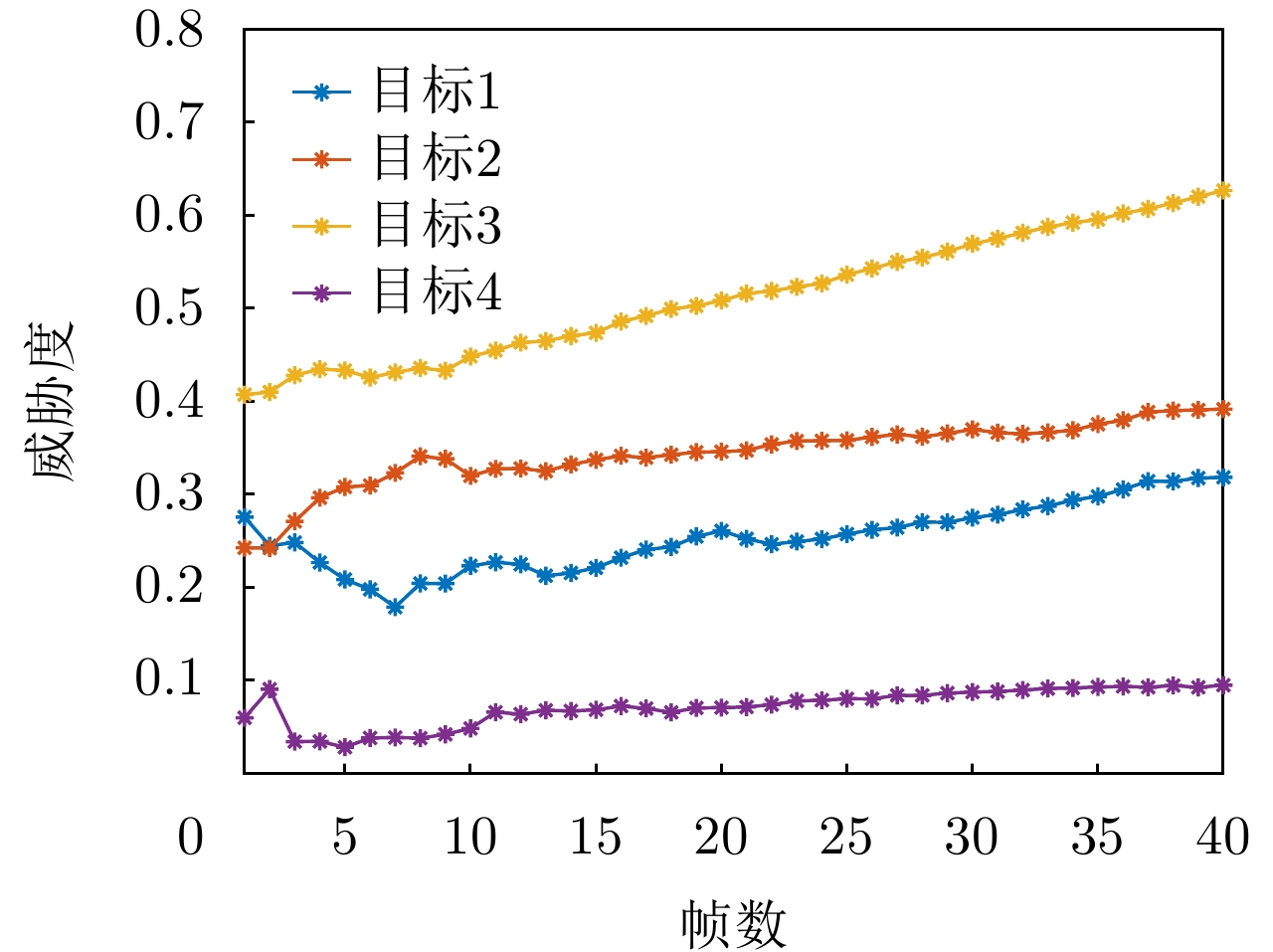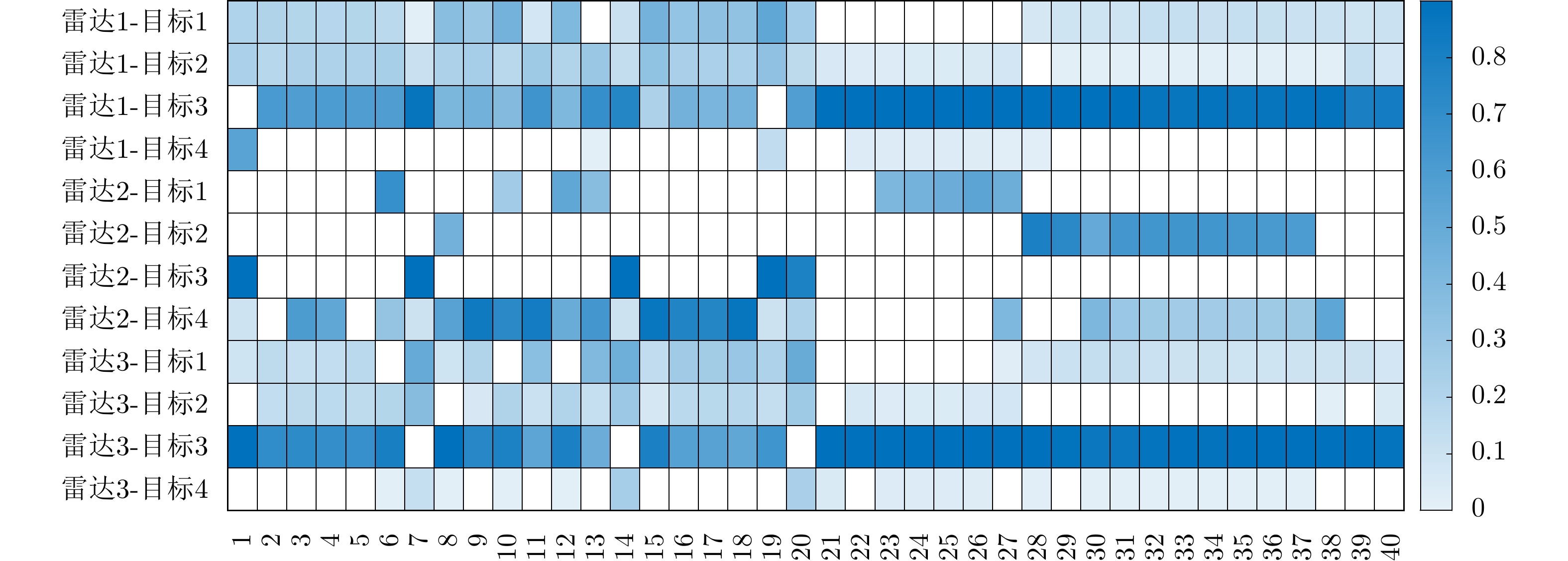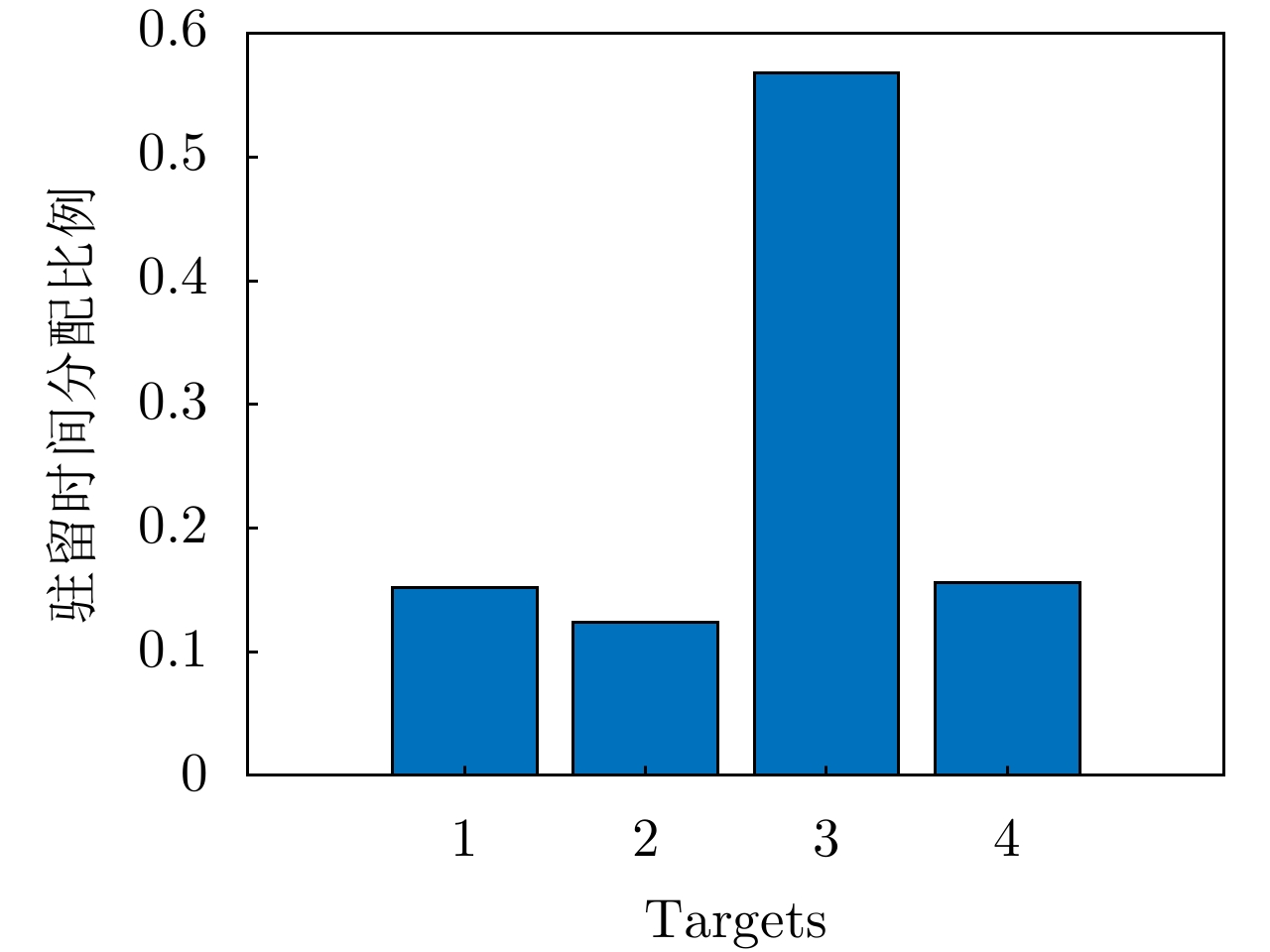| [1] |
张光义. 相控阵雷达系统[M]. 北京: 国防工业出版社, 2009: 1–24.
ZHANG Guangyi. Principles of Phased Array Radar[M]. Beijing: National Defense Industry Press, 2009: 1–24.
|
| [2] |
TAN Qianqian, CHENG Ting, and LI Xi. Online adaptive dwell scheduling based on dynamic template for PAR[J]. Journal of Systems Engineering and Electronics, 2021, 32(5): 1119–1129. doi: 10.23919/JSEE.2021.000096 |
| [3] |
卢建斌. 相控阵雷达资源优化管理的理论与方法[D]. [博士论文], 国防科学技术大学, 2007.
LU Jianbin. Theory and method of resource optimization and management for phased array radars[D]. [Ph. D. dissertation], National University of Defense Technology, 2007.
|
| [4] |
王祥丽, 易伟, 孔令讲. 基于多目标跟踪的相控阵雷达波束和驻留时间联合分配方法[J]. 雷达学报, 2017, 6(6): 602–610. doi: 10.12000/JR17045WANG Xiangli, YI Wei, and KONG Lingjiang. Joint beam selection and dwell time allocation for multi-target tracking in phased array radar system[J]. Journal of Radars, 2017, 6(6): 602–610. doi: 10.12000/JR17045 |
| [5] |
王祥丽. 相控阵雷达跟踪模式下波束和时间资源管理算法研究[D]. [硕士论文], 电子科技大学, 2018.
WANG Xiangli. Research on beam and time resources management algorithm for target tracking in phased array radar[D]. [Master dissertation], University of Electronic Science and Technology of China, 2018.
|
| [6] |
HUA Hanbing. Study on characteristics and critical technologics of radar networking[J]. Modern Electronics Technique, 2007, 30(23): 33–35. doi: 10.3969/j.issn.1004-373X.2007.23.012 |
| [7] |
SUN Jun, ZHANG Dalin, and YI Wei. Resource allocation for multi-jammer cooperatively jamming netted radar systems[J]. Radar Science and Technology, 2022, 20(3): 237–244, 254. doi: 10.3969/j.issn.1672-2337.2022.03.001 |
| [8] |
GUO Guanbin and FANG Qing. Current status and development of radar netting technique[J]. Radar Science and Technology, 2005, 3(4): 193–197, 202. doi: 10.3969/j.issn.1672-2337.2005.04.001 |
| [9] |
LIU Pengxiang, HAN Wei, SHI Weiwei, et al. evaluation for the aerial targets’ threat in the complicated environment[J]. Journal of Naval Aeronautical and Astronautical University, 2010, 25(4): 462–466. doi: 10.3969/j.issn.1673-1522.2010.04.023 |
| [10] |
LÜ Jiangtao, GAO Bingya, and WANG Gaofei. Ballistic missile threat assessment and its application in radar[J]. Modern Radar, 2017, 39(12): 20–23, 28. doi: 10.16592/j.cnki.1004-7859.2017.12.004 |
| [11] |
YAN Junkun, PU Wenqiang, LIU Hongwei, et al. Cooperative target assignment and dwell allocation for multiple target tracking in phased array radar network[J]. Signal Process, 2017, 141: 74–83. doi: 10.1016/j.sigpro.2017.05.014 |
| [12] |
ZHANG Weiwei, SHI Chenguang, ZHOU Jianjiang, et al. Joint aperture and transmit resource allocation strategy for multi-target localization in phased array radar network[J]. IEEE Transactions on Aerospace and Electronic Systems, 2022: 1–14. doi: 10.1109/TAES.2022.3203688 |
| [13] |
GODRICH H, PETROPULU A P, and POOR H V. Power allocation strategies for target localization in distributed multiple-radar architectures[J]. IEEE Transactions on Signal Processing, 2011, 59(7): 3226–3240. doi: 10.1109/TSP.2011.2144976 |
| [14] |
YAN Junkun, LIU Hongwei, PU Wenqiang, et al. Joint beam selection and power allocation for multiple target tracking in netted colocated MIMO radar system[J]. IEEE Transactions on Signal Processing, 2016, 64(24): 6417–6427. doi: 10.1109/TSP.2016.2607147 |
| [15] |
CHENG Ting, LI Xi, TAN Qianqian, et al. Adaptive time-space resource and waveform control for collocated MIMO radar with simultaneous multi-beam[J]. Journal of Systems Engineering and Electronics, 2022, 33(1): 47–59. doi: 10.23919/JSEE.2022.000006 |
| [16] |
时晨光, 董璟, 周建江. 频谱共存下面向多目标跟踪的组网雷达功率时间联合优化算法[J]. 雷达学报, 2023, 12(3): 590–601. doi: 10.12000/JR22146SHI Chenguang, DONG Jing, and ZHOU Jianjiang. Joint transmit power and dwell time allocation for multitarget tracking in radar networks under spectral coexistence[J]. Journal of Radars, 2023, 12(3): 590–601. doi: 10.12000/JR22146 |
| [17] |
YUAN Ye, YI Wei, HOSEINNEZHAD R, et al. Robust power allocation for resource-aware multi-target tracking with colocated MIMO radars[J]. IEEE Transactions on Signal Processing, 2021, 69: 443–458. doi: 10.1109/TSP.2020.3047519 |
| [18] |
许稼, 彭应宁, 夏香根, 等. 基于检测前聚焦的临近空间高动态飞行器雷达探测研究[J]. 雷达学报, 2017, 6(3): 229–238. doi: 10.12000/JR16148XU Jia, PENG Yingning, XIA Xianggen, et al. Focus-before-detection methods for radar detection of near space high-maneuvering aircrafts[J]. Journal of Radars, 2017, 6(3): 229–238. doi: 10.12000/JR16148 |
| [19] |
XIE Mingchi, YI Wei, KIRUBARAJAN T, et al. Joint node selection and power allocation strategy for multitarget tracking in decentralized radar networks[J]. IEEE Transactions on Signal Processing, 2018, 66(3): 729–743. doi: 10.1109/TSP.2017.2777394 |
| [20] |
YI Wei, YUAN Ye, HOSEINNEZHAD R, et al. Resource scheduling for distributed multi-target tracking in netted colocated MIMO radar systems[J]. IEEE Transactions on Signal Processing, 2020, 68: 1602–1617. doi: 10.1109/TSP.2020.2976587 |
| [21] |
SHI Chenguang, WANG Yijie, SALOUS S, et al. Joint transmit resource management and waveform selection strategy for target tracking in distributed phased array radar network[J]. IEEE Transactions on Aerospace and Electronic Systems, 2022, 58(4): 2762–2778. doi: 10.1109/TAES.2021.3138869 |
| [22] |
ZHANG Haowei, LIU Weijian, ZONG Binfeng, et al. An efficient power allocation strategy for maneuvering target tracking in cognitive MIMO radar[J]. IEEE Transactions on Signal Processing, 2021, 69: 1591–1602. doi: 10.1109/TSP.2020.3047227 |
| [23] |
YAN Junkun, LIU Hongwei, JIU Bo, et al. Power allocation algorithm for target tracking in unmodulated continuous wave radar network[J]. IEEE Sensors Journal, 2015, 15(2): 1098–1108. doi: 10.1109/JSEN.2014.2360039 |
| [24] |
何友, 修建娟, 关欣. 雷达数据处理及应用[M]. 3版. 北京: 电子工业出版社, 2013: 36–38.
HE You, XIU Jianjuan, and GUAN Xin. Radar Data Processing with Applications[M]. 3rd ed. Beijing: Publishing House of Electronics Industry, 2013: 36–38.
|
| [25] |
DONG Jing, SHI Chenguang, ZHOU Jianjiang, et al. Joint radar selection and resource allocation for multi-target tracking in radar network under communication interference[C]. 2021 International Conference on Control, Automation and Information Sciences (ICCAIS), Xi’an, China, 2021: 73–77.
|
| [26] |
VAN TREES H L. Detection, Estimation, and Modulation Theory: Radar-Sonar Processing and Gaussian Signals in Noise[M]. New York: John Wiley & Sons, 2001: 275–351.
|
| [27] |
VAN TREES H L. Optimum Array Processing: Part IV of Detection, Estimation, and Modulation Theory[M]. New York: John Wiley & Sons, 2004: 917–1317.
|
| [28] |
ZHANG Haowei, XIE Junwei, and SHENG Chuan. Adaptive scheduling algorithm over comprehensive priority for phased array radar[J]. Acta Armamentarii, 2016, 37(11): 2163–2169. doi: 10.3969/j.issn.1000-1093.2016.11.026 |
| [29] |
ZHANG Kaitong, YAN Tao, HAN Chongzhao, et al. Target tracking sensor management method based on threat degree[J]. Command Information System and Technology, 2022, 13(1): 39–44. doi: 10.15908/j.cnki.cist.2022.01.007 |
| [30] |
KATSILIERIS F, DRIESSEN H, and YAROVOY A. Threat-based sensor management for target tracking[J]. IEEE Transactions on Aerospace and Electronic Systems, 2015, 51(4): 2772–2785. doi: 10.1109/TAES.2015.140052 |
| [31] |
EL-FALLAH A, ZATEZALO A, MAHLER R, et al. Unified Bayesian situation assessment sensor management[C]. SPIE 5809, Signal Processing, Sensor Fusion, and Target Recognition XIV, Orlando, United States, 2005: 253–264.
|
| [32] |
RIBEIRO M I. Kalman and extended Kalman filters: Concept, derivation and properties[J]. Institute for Systems and Robotics, 2004,, 43(46): 3736–3741.
|
| [33] |
JULIER S J and UHLMANN J K. A non-divergent estimation algorithm in the presence of unknown correlations[C]. 1997 American Control Conference, Albuquerque, USA, 1997: 2369–2373.
|
| [34] |
YAN Junkun, JIAO Hao, PU Wenqiang, et al. Radar sensor network resource allocation for fused target tracking: A brief review[J]. Information Fusion, 2022, 86/87: 104–115. doi: 10.1016/j.inffus.2022.06.009 |
| [35] |
陈辉, 贺忠良, 连峰, 等. 多目标跟踪中基于目标威胁度评估的传感器控制方法[J]. 电子与信息学报, 2018, 40(12): 2861–2867. doi: 10.11999/JEIT180212CHEN Hui, HE Zhongliang, LIAN Feng, et al. Threat assessment based sensor control for multi-target tracking[J]. Journal of Electronics & Information Technology, 2018, 40(12): 2861–2867. doi: 10.11999/JEIT180212 |
| [36] |
TICHAVSKY P, MURAVCHIK C H, and NEHORAI A. Posterior Cramer-Rao bounds for discrete-time nonlinear filtering[J]. IEEE Transactions on Signal Processing, 1998, 46(5): 1386–1396. doi: 10.1109/78.668800 |
| [37] |
BURER S and LETCHFORD A N. Non-convex mixed-integer nonlinear programming: A survey[J]. Surveys in Operations Research and Management Science, 2012, 17(2): 97–106. doi: 10.1016/j.sorms.2012.08.001 |




 Submit Manuscript
Submit Manuscript Peer Review
Peer Review Editor Work
Editor Work

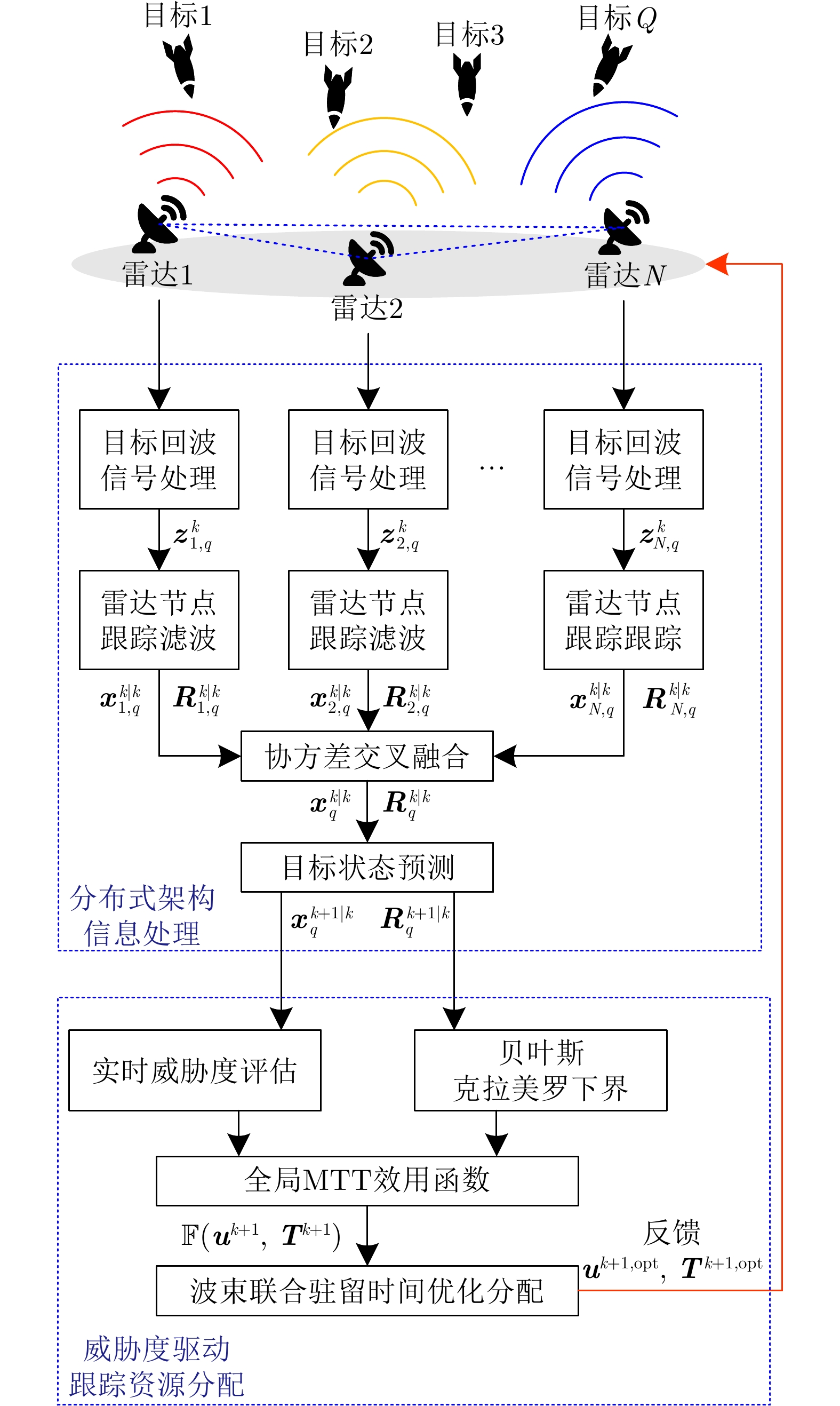



 DownLoad:
DownLoad:
